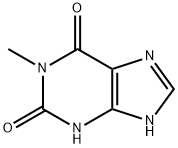ACETYLUREA
- CAS NO.:591-07-1
- Empirical Formula: C3H6N2O2
- Molecular Weight: 102.09
- MDL number: MFCD00038140
- EINECS: 209-698-3
- SAFETY DATA SHEET (SDS)
- Update Date: 2024-12-18 14:08:57

What is ACETYLUREA?
The Uses of ACETYLUREA
Acetylurea is used in the preparation Multiple urea derivative compounds which includes glycogen phosphorylase inhibitors
Synthesis Reference(s)
The Journal of Organic Chemistry, 15, p. 249, 1950 DOI: 10.1021/jo01148a006
Properties of ACETYLUREA
| Melting point: | 216-218°C |
| Boiling point: | 191.38°C (rough estimate) |
| Density | 1.204 |
| refractive index | 1.5110 (estimate) |
| storage temp. | -20°C Freezer, Under inert atmosphere |
| solubility | DMSO (Sparingly, Sonicated), Methanol (Slightly, Sonicated), Water (Slightly) |
| pka | 13.00±0.70(Predicted) |
| form | Solid |
| color | White to Off-White |
| Water Solubility | 13g/L(15 ºC) |
| BRN | 1751301 |
| CAS DataBase Reference | 591-07-1(CAS DataBase Reference) |
| EPA Substance Registry System | Acetamide, N-(aminocarbonyl)- (591-07-1) |
Safety information for ACETYLUREA
| Signal word | Warning |
| Pictogram(s) |
 Exclamation Mark Irritant GHS07 |
| GHS Hazard Statements |
H315:Skin corrosion/irritation H319:Serious eye damage/eye irritation H335:Specific target organ toxicity, single exposure;Respiratory tract irritation |
| Precautionary Statement Codes |
P233:Keep container tightly closed. P260:Do not breathe dust/fume/gas/mist/vapours/spray. P261:Avoid breathing dust/fume/gas/mist/vapours/spray. P264:Wash hands thoroughly after handling. P264:Wash skin thouroughly after handling. P271:Use only outdoors or in a well-ventilated area. P280:Wear protective gloves/protective clothing/eye protection/face protection. P304:IF INHALED: P312:Call a POISON CENTER or doctor/physician if you feel unwell. P321:Specific treatment (see … on this label). P340:Remove victim to fresh air and keep at rest in a position comfortable for breathing. P362:Take off contaminated clothing and wash before reuse. P302+P352:IF ON SKIN: wash with plenty of soap and water. P304+P340:IF INHALED: Remove victim to fresh air and Keep at rest in a position comfortable for breathing. P305+P351+P338:IF IN EYES: Rinse cautiously with water for several minutes. Remove contact lenses, if present and easy to do. Continuerinsing. P332+P313:IF SKIN irritation occurs: Get medical advice/attention. P337+P313:IF eye irritation persists: Get medical advice/attention. P403:Store in a well-ventilated place. P405:Store locked up. P403+P233:Store in a well-ventilated place. Keep container tightly closed. P501:Dispose of contents/container to..… |
Computed Descriptors for ACETYLUREA
ACETYLUREA manufacturer
New Products
Tert-butyl bis(2-chloroethyl)carbamate (S)-3-Aminobutanenitrile hydrochloride N-Boc-D-alaninol N-BOC-D/L-ALANINOL N-octanoyl benzotriazole 3,4-Dibenzyloxybenzaldehyde 4-Hydrazinobenzoic acid 1,1’-CARBONYLDIIMIDAZOLE R-2-BENZYLOXY PROPIONIC ACID 3-NITRO-2-METHYL ANILINE 4-IODO BENZOIC ACID 4-HYDROXY BENZYL ALCOHOL 4-(3-chloropropyl)morpholine phenylhydrazine hydrochloride (2-Hydroxyphenyl)acetonitrile 4-Bromopyrazole 5-BROMO-2CYANO PYRIDINE 5,6-Dimethoxyindanone 5-broMo-2-chloro-N-cyclopentylpyriMidin-4-aMine 4-methoxy-3,5-dinitropyridine 2-(Cyanocyclohexyl)acetic acid 2-aminopropyl benzoate hydrochloride 1-(4-(aminomethyl)benzyl)urea hydrochloride tert-butyl 4- (ureidomethyl)benzylcarbamateRelated products of tetrahydrofuran








You may like
-
 591-07-1 N-carbamoylacetamide 98%View Details
591-07-1 N-carbamoylacetamide 98%View Details
591-07-1 -
 591-07-1 98%View Details
591-07-1 98%View Details
591-07-1 -
 Acetylurea CAS 591-07-1View Details
Acetylurea CAS 591-07-1View Details
591-07-1 -
 Acetylurea 95% CAS 591-07-1View Details
Acetylurea 95% CAS 591-07-1View Details
591-07-1 -
 13057-17-5 95.0%View Details
13057-17-5 95.0%View Details
13057-17-5 -
 4-bromoaniline 106-40-1 99.0%View Details
4-bromoaniline 106-40-1 99.0%View Details
106-40-1 -
 5-bromo-2-chlorobenzoic acid 99.0%View Details
5-bromo-2-chlorobenzoic acid 99.0%View Details
21739-92-4 -
 15761-38-3 97.0%View Details
15761-38-3 97.0%View Details
15761-38-3
Statement: All products displayed on this website are only used for non medical purposes such as industrial applications or scientific research, and cannot be used for clinical diagnosis or treatment of humans or animals. They are not medicinal or edible.